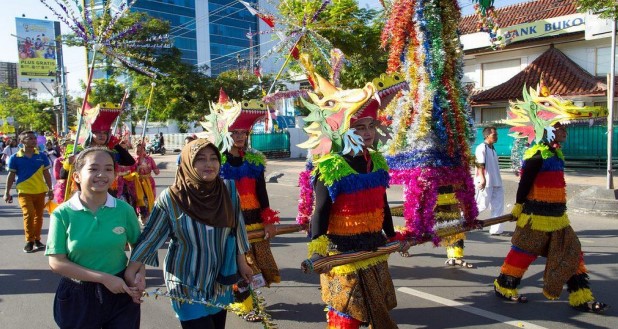As the world becomes more interconnected, the phenomena of cultural exchange and transformation, known as acculturation, is playing a pivotal role in shaping societies across the globe. In Acculturation AP Human Geography, acculturation becomes a key concept in analyzing the influence of migration and globalization on cultural diversity, identity formation, and social change.
What is Acculturation and its Significance in AP Human Geography?

Acculturation is the process through which individuals or groups of people integrate elements of another culture, often as a result of direct and continuous contact. It implies both the acquisition of the new culture and the potential loss or modification of the original culture.
In the context of Acculturation AP Human Geography, understanding acculturation provides a lens to assess how cultural exchange impacts communities and influences phenomena like urbanization, political organization, economic development, and demographic change. It highlights how cultures are not static but constantly evolving through interactions, necessitating the preservation of cultural heritage and promotion of cultural pluralism.
How does Cultural Assimilation Contribute to Acculturation?

Cultural assimilation, a subset of acculturation, refers to when a group abandons its original cultural practices and fully adopts the practices of the dominant culture. This process can result from voluntary desire to fit in or due to the pressures of the dominant culture.
However, assimilation can sometimes lead to the loss of distinct cultural identities and the homogenization of cultural practices. Therefore, it’s crucial to balance cultural assimilation with cultural preservation, ensuring the survival of diverse cultural heritages and traditions.
Acculturation on Cultural Diversity

Acculturation can significantly affect cultural diversity. As cultures interact and adopt practices from each other, it can lead to an increase in cultural diversity within a society. It introduces new foods, languages, beliefs, traditions, and forms of art, contributing to the rich tapestry of multicultural societies.
However, if acculturation leans towards assimilation, it can also diminish cultural diversity, leading to cultural erosion. In this regard, it’s essential to promote policies that encourage cultural integration, emphasizing mutual respect and understanding of different cultures.
Role in Language and Communication
Language, a vital aspect of culture, is deeply impacted by acculturation. When cultures intermingle, they often share languages, leading to the emergence of new dialects, pidgin languages, or even the dominance of one language over others.
The acculturation process can also shape communication patterns, determining how individuals interact, negotiate, and establish relationships. For instance, norms around directness or politeness, non-verbal cues, and the use of silence can shift due to acculturation.
Different Types of Acculturation Strategies
Acculturation strategies vary based on how individuals or groups relate to their original and the new culture. John Berry’s model outlines four primary acculturation strategies:
- Integration: Individuals maintain their original culture while also adopting elements of the new culture.
- Assimilation: Individuals abandon their original culture and fully embrace the new culture.
- Separation: Individuals hold onto their original culture and resist adopting the new culture.
- Marginalization: Individuals lose contact with their original culture and also do not adopt the new culture.
These strategies illustrate the various paths that acculturation can take, each with different implications for individual identity, social relations, and societal cohesion.
Relation to Globalization
Acculturation is closely linked to globalization, a process characterized by the increased interconnectedness of societies. As the barriers between societies dissolve, acculturation accelerates, with cultures rapidly influencing each other.
Globalization can spread ideas, beliefs, and practices around the world, resulting in global cultural trends. However, it also poses the risk of creating a ‘global monoculture’, threatening cultural diversity.
Acculturation and Cultural Identity
Acculturation significantly shapes cultural identity, determining how individuals identify with their original and new cultures. This process can result in bicultural identity (comfortably identifying with both cultures), assimilated identity (identifying solely with the new culture), separated identity (identifying only with the original culture), or marginalized identity (not identifying with either culture).
Positive and Negative Consequences
Acculturation has both positive and negative consequences. On the positive side, it promotes cultural exchange, diversity, and understanding, and can lead to innovation and societal development.
However, it can also lead to cultural loss and assimilation pressure, causing acculturative stress. It can create intergenerational tensions, with younger generations potentially favoring the new culture over their traditional one.
Influencing Social Change
Acculturation is a potent force of social change. As individuals adopt different cultural practices, societal norms evolve. This change can impact gender roles, family structures, social hierarchies, and even legal systems, reflecting the transformative potential of acculturation.
Acculturation is a complex process, with profound implications for individuals and societies. In Acculturation AP Human Geography, it offers a crucial perspective to understand how cultures evolve, interact, and shape the world. By exploring acculturation, we delve into the dynamic nature of culture and the interconnectedness of our world.
Factors Influencing the Process of Acculturation
The process of acculturation is influenced by several factors. The interaction between the two cultures, the socio-political environment, and the individuals’ characteristics are among the key determining elements.
Cultural Compatibility
The degree of similarity or difference between the two cultures significantly influences acculturation. Greater cultural compatibility facilitates a smoother process, while significant differences might lead to conflict and resistance.
Socio-political Environment
The socio-political environment in which acculturation takes place can shape the process. Policies towards immigrants, racial or ethnic attitudes, and opportunities for social and economic participation can affect how easily individuals can integrate or feel forced to assimilate.
Individual Factors
Individual characteristics such as age, education, socio-economic status, and personality traits can also impact the acculturation process. For instance, younger people and those with higher education levels may find it easier to adapt to a new culture.
Acculturation versus Assimilation
While both acculturation and assimilation involve cultural change, they represent different dynamics. Acculturation involves adopting certain elements of another culture, potentially resulting in a blend of cultural practices. On the other hand, assimilation involves completely adopting a new culture, often at the expense of the original culture. Understanding these differences is crucial for appreciating the complexities of cultural change.
Examples Around the World
Acculturation is a global phenomenon, manifesting differently across various regions. For instance, the influx of Western fast-food chains in East Asia is an example of acculturation, impacting local dietary practices. Similarly, the popularity of Yoga in the West represents the adoption of an aspect of South Asian culture.
Another example is the spread of English as a global lingua franca, influencing local languages and communication practices worldwide.
Immigrant Experience and Acculturation
The experience of immigrants epitomizes acculturation. Immigrants often need to adapt to their host country’s culture, which can lead to significant changes in their language, diet, clothing, and overall lifestyle. The pace and extent of this adaptation can vary widely, influenced by factors such as age, education, support networks, and the host society’s attitudes.
Impact on Traditional Cultural Practices
Acculturation can significantly impact traditional cultural practices. As individuals and societies adopt elements of a new culture, their traditional practices may evolve or even disappear. This evolution can impact various cultural aspects, including traditional arts, rituals, social structures, and belief systems.
While this can lead to cultural innovation and adaptation, it also raises concerns about cultural loss and the erosion of cultural diversity. Therefore, acknowledging and navigating these tensions is crucial in our increasingly interconnected world.
Challenges of Acculturation
The process of acculturation can pose several challenges. Individuals may face identity confusion, struggling to navigate between their original and new culture. They may also experience acculturative stress, resulting from the pressures to adapt to a new culture. Societies may face tensions between cultural preservation and change, and between different cultural groups.
Navigating these challenges requires understanding, empathy, and constructive dialogues, emphasizing the shared humanity underlying cultural differences.
Also Read: Trace Cool Math Games: (Full Walkthrough Games) 2023
Conclusion
In conclusion, acculturation, a central concept in Acculturation AP Human Geography, reflects the dynamic nature of culture and the intricate ways it shapes and is shaped by social processes. By exploring this concept, we gain profound insights into the complexities of cultural change and the evolving tapestry of human societies.

